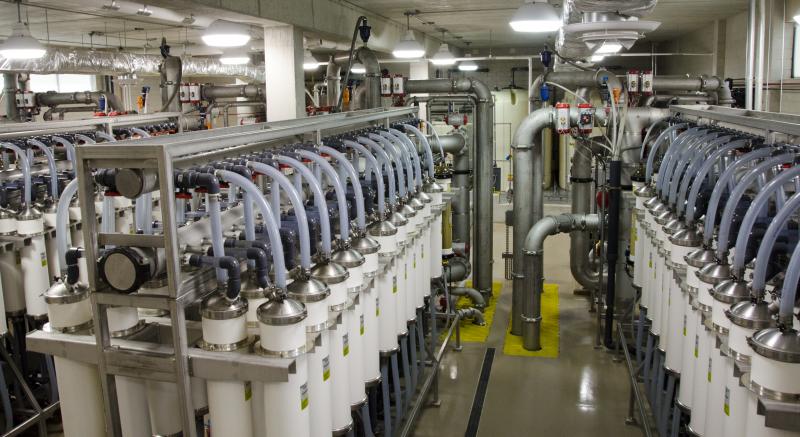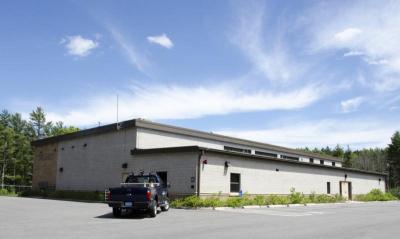Inside the Mattapoisett River Valley water treatment plant
At 92 feet by 160 feet, the Mattapoisett River Valley Water District Water Treatment Plant doesn’t take up as much space as its name would suggest, but it has the capacity to pump out 6 million tons of clean water every day.
Now four years old, the plant, which went online in May 2008, has proved its worth, according to Mattapoisett’s Water and Sewer Commissioner Nick Nicholson.
But few people are aware of the building hidden in the woods off Mattapoisett’s Tinkham Lane that generates drinkable water for much of Marion, Mattapoisett, Fairhaven and part of Rochester.
The four towns first began working together 20 years before the plant was built to preserve clean water from the Mattapoisett River Valley.
The valley begins around Snipatuit Pond and was originally formed by glaciers, which left an underground aquifer that supplies much of the area with water. Seven wells along the valley tap into the aquifer. The oldest still in use dates back to 1951.
In 2002, the towns each realized that high concentrations of iron and manganese in their wells and other poor water quality issues needed to be addressed; however, building individual water treatment plants was going to be an expensive option.
Two years later, the Regional Water District was created from the four towns and in 2006 the group broke ground on the $16.5 million plant. By creating a district facility, the towns saved an estimated $4.9 million.
Nicholson, who manages the plant, said the towns are also saving water and customers get cleaner water coming through their faucets.
“Before, everybody’s well went into their own mains. We could only adjust the pH of the water,” said Nicholson.
Even that was limited. Ideal pH for drinking water is between 7.2 and 7.3, said Nicholson, but pre-plant water averaged 5.8.
Mattapoisett was also losing a lot of water.
“There were two wells that had so much iron and manganese you couldn’t use them. Close to one million gallons could not be used,” he said.
The modern technology at the plant processes water from the towns’ seven wells, adding sodium hydroxide to adjust the pH of the water and liquid oxygen to create ozone that helps filter out much of the iron and manganese from the water.
The water then goes through a pre-filtration system and an ultra-filtration system to remove impurities that previously would have remained in the pipes. Nicholson said the polymer straws in the filters are full of holes invisible to the naked eye that can even remove viruses.
Nicholson and several chemists test the water several times a day, and an elaborate computer system keeps the pumps pumping and tracks every detail of the plant, every second of the day.
Nicholson said making sure the plant is always running properly keeps him awake at nights.
“We have redundancy in everything we have, as much as we can get,” said Nicholson, but there are still late night alarms when something stops working.
“That’s usually at 1:30 or 2 o’clock in the morning,” he said.
Nicholson, who served as commissioner for decades before the facility was built did admit, “The plant added a hole other layer of work. It’s taken more than we ever expected.”
With any new technology there are pros and cons, he said.
“There are so many things that have to happen and work together. It took a huge learning curve.”
Despite the extra work, Nicholson is thankful for the high-quality water that goes out to the towns. And, “knock on wood” there have been no major problems with the plant in the past four years.
It seems Nicholson’s restless nights have paid off.















